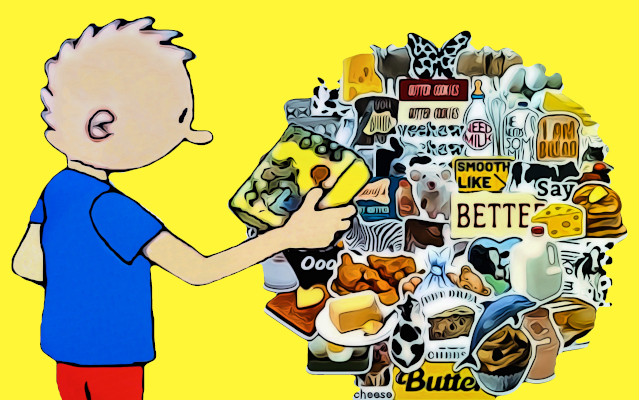Food labels increasingly guide the purchasing choices of Italian consumers, as shown by a survey carried out by Ipsos for GS1 Italy and published in a specific dossier, attached to the 14th edition of the Imagine Observatory. (1)
The survey is based on 2 thousand interviews with a sample of individuals who in 95% of cases are responsible for family purchases for at least half of ordinary spending.
4 out of 10 always read the label
Almost the whole of consumers say they read labels:
– 4 out of 10 (42%) always consult the information available on all or almost all product categories,
– over half (53%) do so only for some categories of food.
The reasons declared by those who never or almost never read the label of food products are three:
– knowledge of the product, due to its habitual consumption (38% of the sample)
– lack of time (20%)
– belief that one knows enough and has no further interest (16%).
An app to ‘read’ the label with one click
To those who are not informed regarding the quality of food, it is perhaps useful to remember that for the same price it is often possible to purchase products with more balanced nutritional profiles and without less than recommended additives. (2)
The scarcity of time can be filled with the use of the Yuka app. Simply download it for free on your smartphone and instantly obtain an objective opinion on the product by simply scanning the barcode on the package. (3)
Reading at the point of sale or at home
The consultation of the label also occurs at times other than the purchase decision:
– from 4 to 7 out of 10 consumers, depending on the category, always do so at the point of sale,
– 15% read the label at home,
– approximately 10% the law after consumption of the product,
– between 10 and 18%, depending on the category, delves deeper and searches for information on the web. Where, as we have seen, it is sometimes impossible even to find the list of ingredients and the nutritional table. (4)
The most studied foods
Reading of the label most often concerns ready meals, packaged cured meats and cheeses, canned food and packaged fresh foods.
Less often, consumers consult the label even on foods with simple recipes. It happens to 60% of buyers of purees/pulps and tomato-based products and 44% of those of tea/coffee/herbal teas. The reasons, in these cases, are different from simply searching for a list of ingredients or a nutritional table.
What is the label for?
In consumer experience interviewed, the elements reported as most interesting among the various information on the label are:
– expiry date (63%), (5)
– place of origin and production (44%)
– fat and sugar content (31%). In this context, followed closely by nutritional values in general (27%), the presence of colorings and salt content (23%),
– useful information to verify the impact on health in general (27%),
– indications that exclude the presence of polluting substances (17%). In the chapter relating to product sustainability, information consistent with certain value choices and the presence of social sustainability certifications (Faitrade, fair trade etc.), respectively sought by 14% and 13% of the sample, appear below.
The margins for improvement of the labels
The survey also reveals the inadequacy of labels. In fact, as many as 7 out of 10 consumers report at least one experience of difficulty in finding the desired information and just under 67% of the sample reports problems decoding the information.
The less understandable news on the label are those relating to sustainability understood as the presence of pollutants, adherence to values, supply chain, healthiness and disposal of packaging.
The frontier of the QR code
Familiarity with the barcode is now consolidated, as it is known by 82% of those interviewed.
The QR code, now widely used also in relations with the public administration (i.e. payment slips), is also well known. 67% of the sample knows it and uses it, a further 24% knows it but does not use it.
Inserting the QR code on the label is an extraordinary wild card. It allows you to make numerous information immediately available (including video) that cannot find space and expression (including audiovisual and interactive) on the packaging.
Asked on the propensity to scan the QR code on the label to calmly, accurately and legibly read all the information relating to the product, 77% of consumers responded positively.
Marta Strinati
Footnotes
(1) Marta Strinati. High prices, reduced food consumption. The 14th edition of Osservatorio Imagine. GIFT (Great Italian Food Trade).
(2) Marta Strinati. Identikit of ultraprocessed foods, excess of critical nutrients and ‘cosmetic’ additives. GIFT (Great Italian Food Trade).
(3) Marta Strinati, Dario Dongo. Yuka, if you know it, you spread it. The app conquers 2 million Italians in just one year. GIFT (Great Italian Food Trade).
(4) Marta Strinati. The omissions of online shopping platforms. Altroconsumo survey. GIFT (Great Italian Food Trade). 22.10.23
(5) Expiry date or TMC? The lawyer Dario Dongo answers. DO (Food and Agriculture Requirements). two.
Professional journalist since January 1995, he has worked for newspapers (Il Messaggero, Paese Sera, La Stampa) and periodicals (NumeroUno, Il Salvagente). She is the author of journalistic surveys on food, she has published the book "Reading labels to know what we eat".




